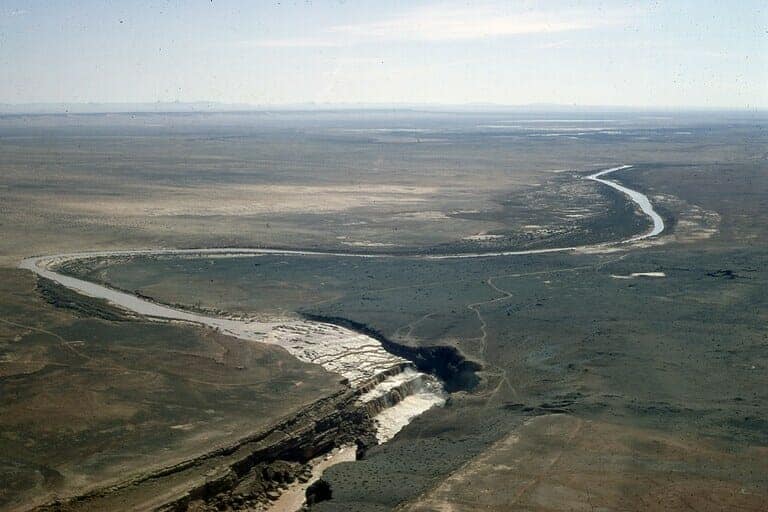

Photo: Sections of the Little Colorado River in northern Arizona are ephemeral, flowing most frequently during the spring to accommodate snowmelt runoff or during the summer monsoon season. In this view, the river is at flood stage, with water cascading over the falls. Dale Nations/Flickr CC
On Dec. 11, the Trump administration announced plans to cut back the number of wetlands and creeks protected under the Clean Water Act, which regulates water pollution in the U.S. The new rules would leave about half the nation’s wetlands and all of its ephemeral streams — those waterways, common in the West, that flow only after rainfall or snowmelt — without federal safeguards.
The proposed guidelines, which will almost certainly face years of lawsuits, are a stark departure from how previous administrations have interpreted the act — and a sharp divergence from research on how to protect clean water. The Environmental Protection Agency and the Army Corps of Engineers argued that the new rules were informed by science. But the agencies did not conduct a new scientific assessment of which waterways the Clean Water Act should cover; instead, they relied on a comprehensive report prepared by the EPA in 2015. That report, on how streams and wetlands are connected to downstream waters, highlights the importance of the very waterways the new guidelines would leave unprotected.
High Country News recently caught up with Ellen Wohl, a river researcher and professor at Colorado State University who served on the scientific review committee for the 2015 EPA report, to find out how scientists view the new guidelines.
High Country News: Does this proposed rule match what researchers know is important for protecting clean water?
Ellen Wohl: Absolutely not. It’s diametrically opposed to how the scientific community understands rivers as ecosystems, and river function.
Most of us, when we think about rivers, we think of the type of river that we would fish or boat on, or really big rivers; we don’t think of the river that we could jump across. But if you spread your hand and you look at it, and you say […]
Full article: New rules limiting clean water protections ignore stream science
Trump rolls back decades of Clean Water Act protections
Pruitt takes over authority for EPA water protections policy
Supreme Court rules against Trump administration on Clean Water rule
Don’t be silent about the EPA Clean Water rollback
Should Rivers Have Rights? A Growing Movement Says It’s About Time
Clean water is essential for life, yet millions of Americans unknowingly consume contaminants through their…
Human brains contain higher concentrations of microplastics than other organs, according to a new study, and the…
From the Office of the Governor: In anticipation of a multi-day, significant atmospheric river in Northern California,…
From Governor Newsom: Scientists, water managers, state leaders, and experts throughout the state are calling…
Photo: A harmful algal bloom in Milford Lake, Kansas, made the water appear bright green.…
An expanded plastic foam coffee cup is at a donut shop in Monterey Park, California.…